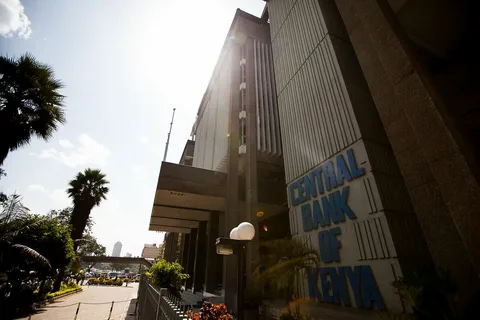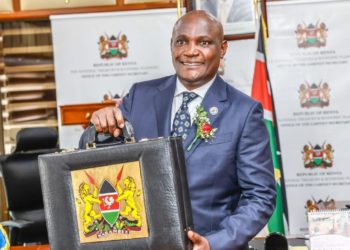In 2019, Kenya’s financial sector entered a new phase with the rollout of the Risk-Based Credit Pricing Model (RBCPM). This marked a shift from blanket credit pricing practices to a more targeted, risk-sensitive approach. Five years on, the Central Bank of Kenya (CBK) is undertaking a comprehensive review to evaluate the model’s effectiveness and alignment with broader financial sector reforms.
The Evolution of Credit Pricing in Kenya
Kenya’s journey toward effective credit pricing has been shaped by key policy interventions over the past three decades. In 1991, interest rates were liberalized to promote a free-market pricing mechanism. This was followed by the introduction of the Kenya Bankers Reference Rate (KBRR) in 2014, aimed at increasing transparency in loan pricing. However, the KBRR was eventually suspended in 2017 due to poor adoption and market confusion.
The interest rate capping policy introduced in 2016 further constrained the credit market, setting lending limits at 4.0% above the Central Bank Rate (CBR) and imposing minimum returns on deposits. While the intent was to protect borrowers from exorbitant rates, the cap led to adverse outcomes such as restricted credit access, weakened monetary policy transmission, and a surge in unregulated digital lending. This led to its repeal in 2019, paving the way for the RBCPM.
Risk-Based Credit Pricing Model
Introduced under the Kenya Banking Sector Charter (KBSC), the RBCPM enables banks to price loans based on the risk profile of each borrower. This risk-based approach comprises three components:
- Base Rate – the bank’s minimum sustainable lending rate.
- Credit Risk Premium – a variable rate based on the borrower’s risk profile.
- Other Charges – limited to legitimate processing fees and excludes third-party costs like insurance.
The model is intended to encourage a fairer credit environment, improve access to credit for SMEs and low-risk individuals, and restore the role of interest rates in monetary policy transmission.
Assessing the Model: Implementation Challenges
CBK’s review, which involved inspections of select banks, benchmarking with global practices, and evaluation of industry proposals, revealed key issues in implementation:
- Inconsistent Application: Banks often excluded certain loan products from the model or applied uniform pricing by customer segments rather than individual borrower risk.
- Outdated Parameters: Some banks used model that had obsolete variables not reflective of current credit risk dynamics.
- Opaque Pricing: Banks frequently imposed additional charges not covered under the model
- Governance Gaps: Oversight, internal governance and review process of credit pricing models were generally weak.
- High Funding Costs: Persistent high deposit rates, especially for term deposits, contributed to increased base lending rates.
CBK benchmarked Kenya’s RBCPM against credit pricing models in the U.S., U.K., South Africa, and India. In most jurisdictions, credit pricing is anchored on a common base rate (e.g., central bank policy rate or market reference rate), with individual institutions applying a risk premium tailored to the borrower. The key takeaway was the importance of using a transparent, policy-consistent benchmark rate and ensuring that pricing models evolve alongside market dynamics.
In response to implementation challenges, the Kenya Bankers Association (KBA) proposed a new pricing framework using a uniform base rate called the Kenya Base Rate (KBR), derived from the interbank rate. Banks would then independently add a risk-based margin (“K”) to set the final lending rate.
CBK, however, expressed concerns that this could mirror the shortcomings of the previous KBRR system. Instead, it recommends adopting the Policy Rate (Central Bank Rate) as the common reference rate for all banks. The CBR is market-aligned, forward-looking, and already well understood across the financial ecosystem.
Under CBK’s revised model, lending rates would be calculated as:
Lending Rate = CBR + Premium (“K”)
Where Premium (“K”) The banks operating costs related to lending + Shareholder Return + Borrower Risk Premium
Banks will be required to submit their proposed “K” components for review and implement the revised pricing model across all credit products, including existing facilities. CBK will disclose the elements that make up each bank’s lending rate premium (“K”) on its official website, the Total Cost of Credit (TCC) website, and in two widely circulated national newspapers.
The updated model will cover all types of loans as outlined in clause 1.4.3 of the CBK Prudential Guideline on Risk Classification of Assets, Provisioning, and Limitations on Interest Recoverable from Non-Performing Loans (CBK/PG/04). Specifically:
- New loans will be subject to the revised model immediately from the date it comes into effect.
- Existing loans must be adjusted to align with the new model within a three-month period following the effective date.
As part of this transition, CBK has opened the floor for public and stakeholder feedback on the proposed model, with submissions due by May 2, 2025.
This review signals Kenya’s commitment to deepening financial inclusion, enhancing credit market efficiency, and aligning monetary policy tools with market realities. By refining the RBCPM and rooting it in a credible benchmark like the CBR, Kenya moves closer to a fairer, more resilient, and market-responsive banking system.


















